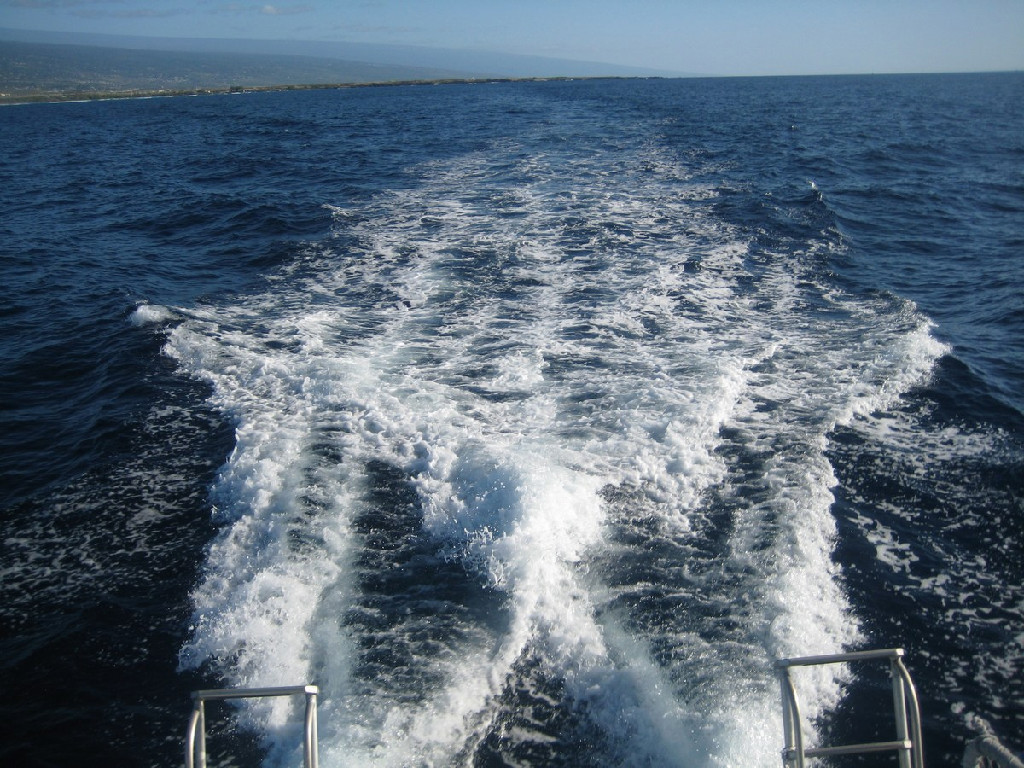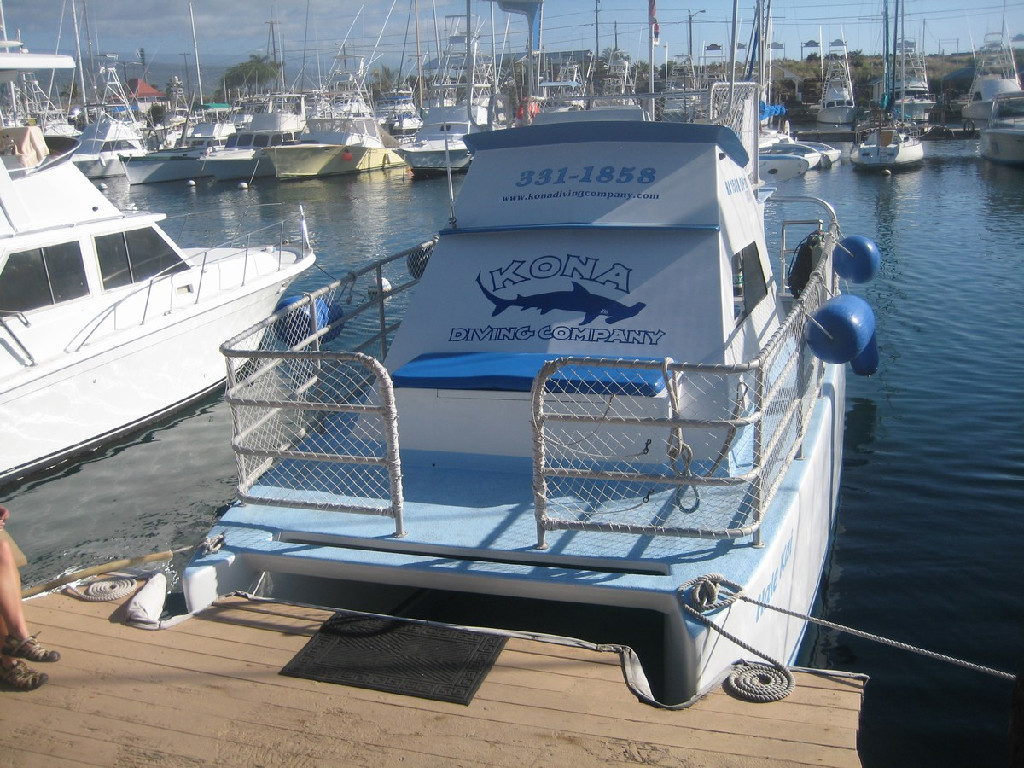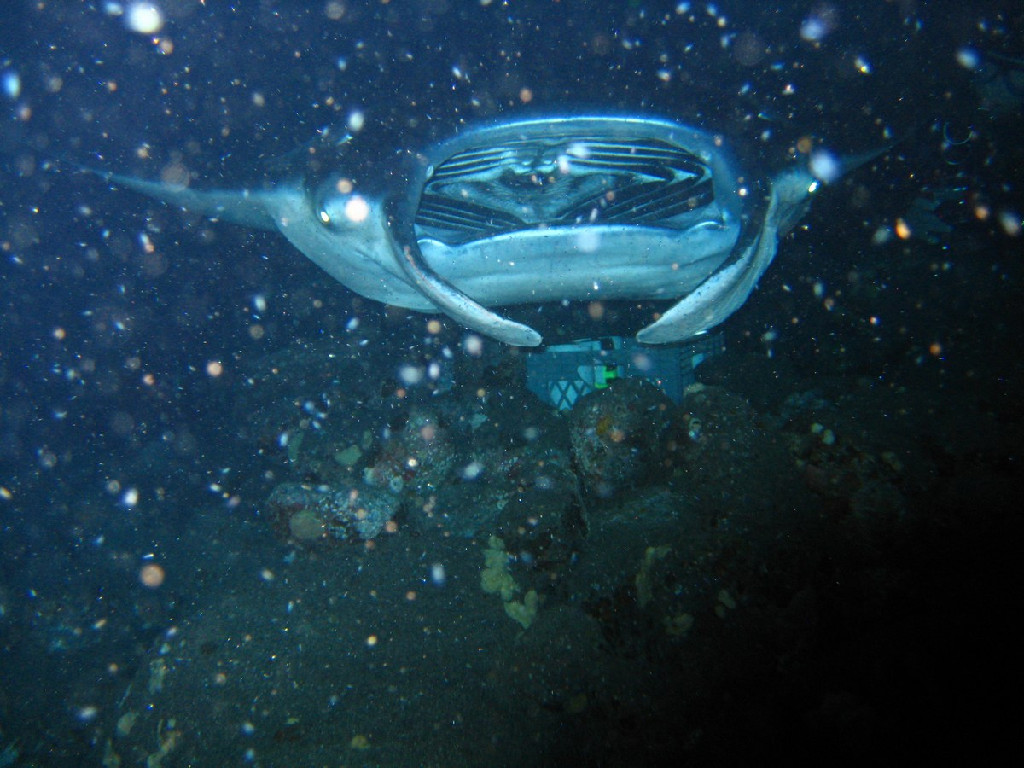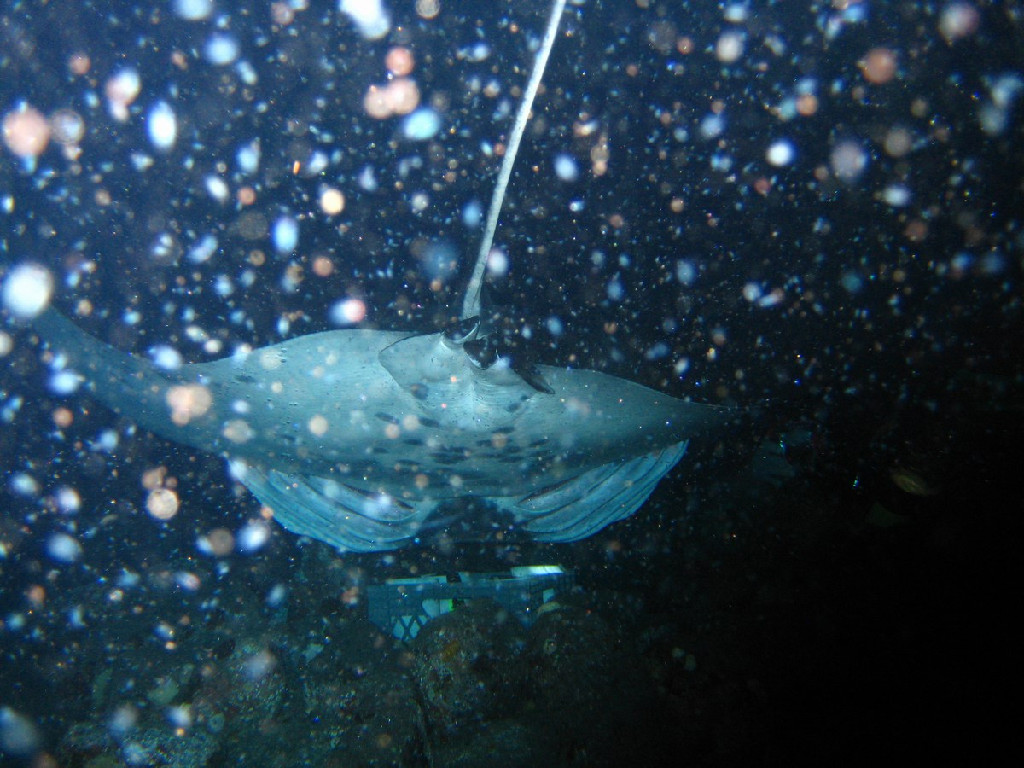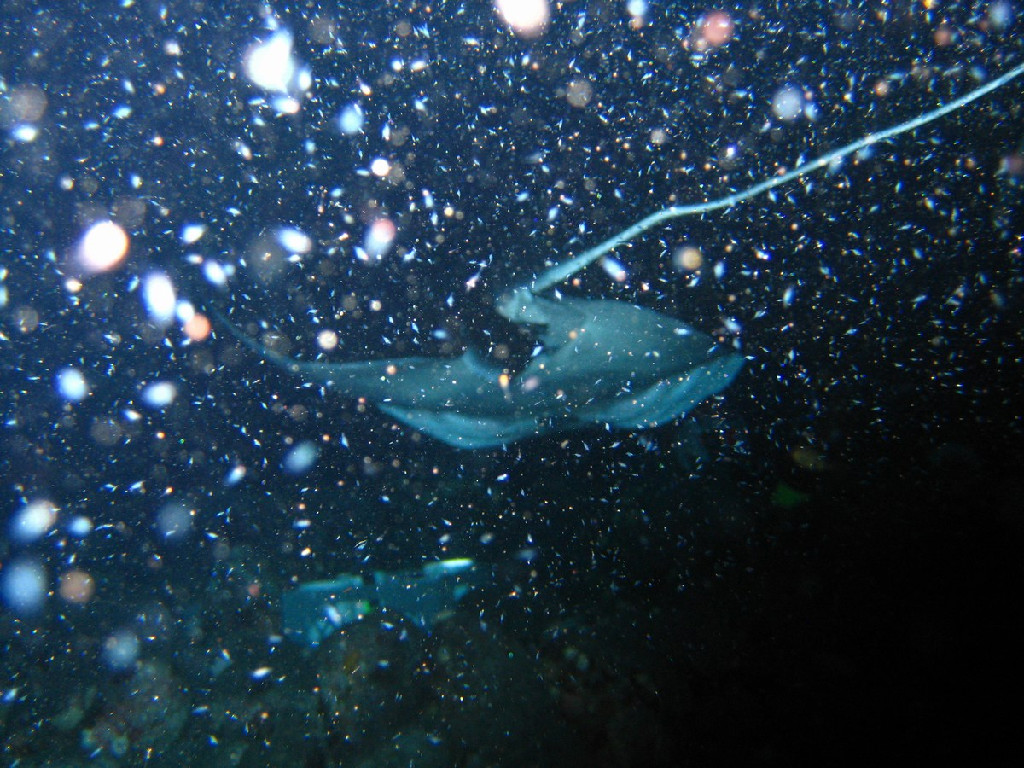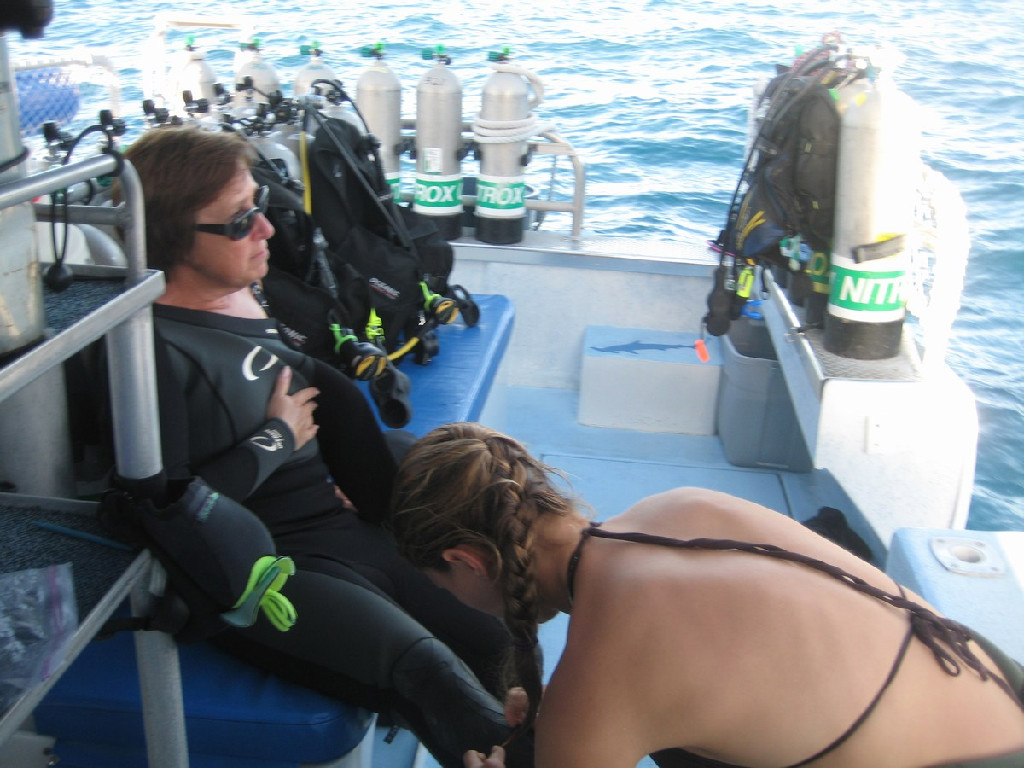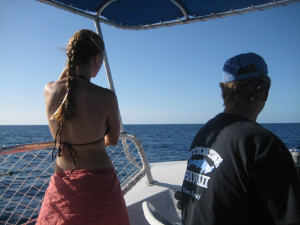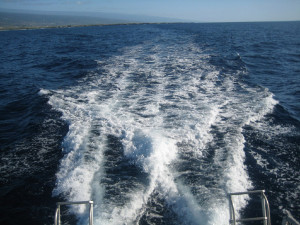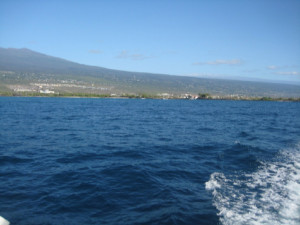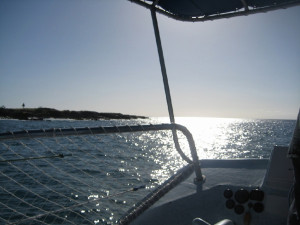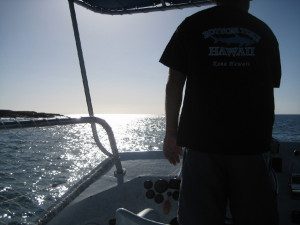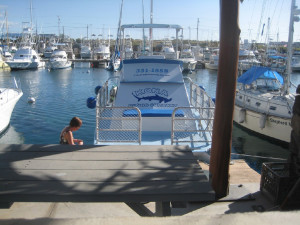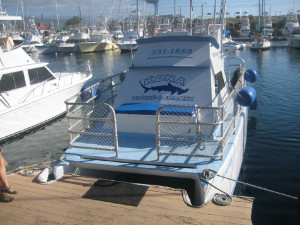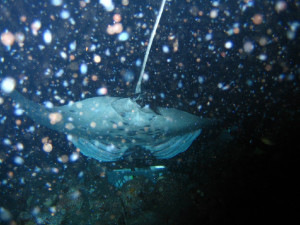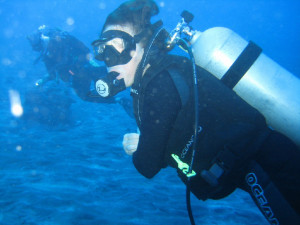 Scuba Diving with Manta Rays in Hawaii
Scuba Diving with Manta Rays in Hawaii
By George F. Karioris
An hour after sunset, I stood at the edge of the dive-boat and peered a bit apprehensively downward into the inky black water of the Pacific. My wife and I along with dive-master Katie of the Kona Diving Company were clad and festooned with all the needed accouterments for a scuba dive into the darkness. Wet suits, lead weights, air tanks, and regulators were all strapped to us seemingly like chains and concrete on a Mafioso informant. But this was no execution; this was high adventure and we were excited to begin.
One by one we stepped off the boat into the Pacific using the scuba giant-stride technique trading the star filled Hawaiian sky for the magical world of the dark ocean. Each of us had a hand held dive-light securely lanyarded to our wrist and also an orange tag-light on our tank. We descended according to our dive plan down the boat’s mooring line to the ocean floor. Cautiously proceeding deeper and deeper to ensure proper equalization of the air spaces in our ears and masks we arrived at 40-feet without incident but with a heightened anticipation.
Before we left the boat on the surface we noticed that there were two other dive-boats in the area immediately adjacent to us. They were also here to dive and snorkel with the manta rays this evening. But the rays are wild animals, unpredictable and notoriously unreliable. When Katie heard the snorkelers on the surface begin to shriek with excitement she smiled. She knew then that there were manta rays in the area. We would see them in just a few minutes from the most amazing vantage point imaginable.
From the anchor point of the mooring line, deep under the sea, we spotted a most incongruous site. Scuba divers affixed to the rocks and sand of the ocean floor spread out in a circle with lights shinning upward like a mystifying campfire. We swam over to an open spot in the circle and politely settled down to the bottom ourselves. To our total amazement and delight two huge male manta rays joined the campfire and began putting on an acrobatic show for us.
The group of Hawaiian manta rays that frequent this area has been studied and tracked for several years. Each manta ray has unique markings on its underside which identify it as clearly as a visible fingerprint. One of the mantas with us tonight was “Shaka” who got his name from a large mark which appears to be the Hawaiian hang-loose hand signal called a shaka by the locals. Katie told us before the dive that as a general rule manta rays weigh 100 pounds per foot of wingspan. Mature females can reach wingspans of 14 feet. But both of the male performers this evening were 10 to 12 feet across the wingspan; weighing in at 1,100 to 1,200 each. They seemed huge to us.
Once we settled down into the circle of divers, we raised our dive-lights over our heads shining upwards. The concept is that light attracts plankton in the water, and plankton attracts the mantas. Our instructions were clear: be careful with the rays, especially don’t reach out to touch them! For their safety and health it’s best not to have direct physical human interaction. Even though I clearly understood these instructions, the manta rays didn’t receive the same briefing. I was bumped and jostled several times by the rays during our dive, it was so cool. Shaka and his buddy put on a dazzling display of acrobatic feats as they scooped plankton into their gaping mouths. They use their muscular wings to propel them through the water and the cephalic fins on their heads to fine-tune their trajectories. Powerful, huge, and graceful they are beautiful but alien to our land-based sensibilities.
At a dive-time of 45 minutes we began a slow and steady ascent to the surface. We purposely did not execute the scuba 3-minute safety stop normally performed at 15-feet. The mantas while graceful and majestic aren’t very smart when it comes to scuba divers and their purposes. If they see divers suspended at a static location for any amount of time they will be drawn by the dive-lights. This behavior creates the danger that they will swim directly into divers or mooring lines at night.
While at the bottom we watched in awed fascination as the rays swooped and looped, passing many times within inches of our heads and hands. I had my digital camera in its 130-foot/watertight case on a cable retractor clipped to my scuba BCD. It was a bit cumbersome, with the dive-light in one hand and camera in the other but I managed to snap a number of stunning still photos and even more spectacular digital movies. PT Barnum had nothing on this evening’s experience, for me this was the greatest show on Earth!
Watch the Manta Ray video…
[embedyt]http://www.youtube.com/watch?v=WM4bqe2BDQg[/embedyt]
Published March 2011


